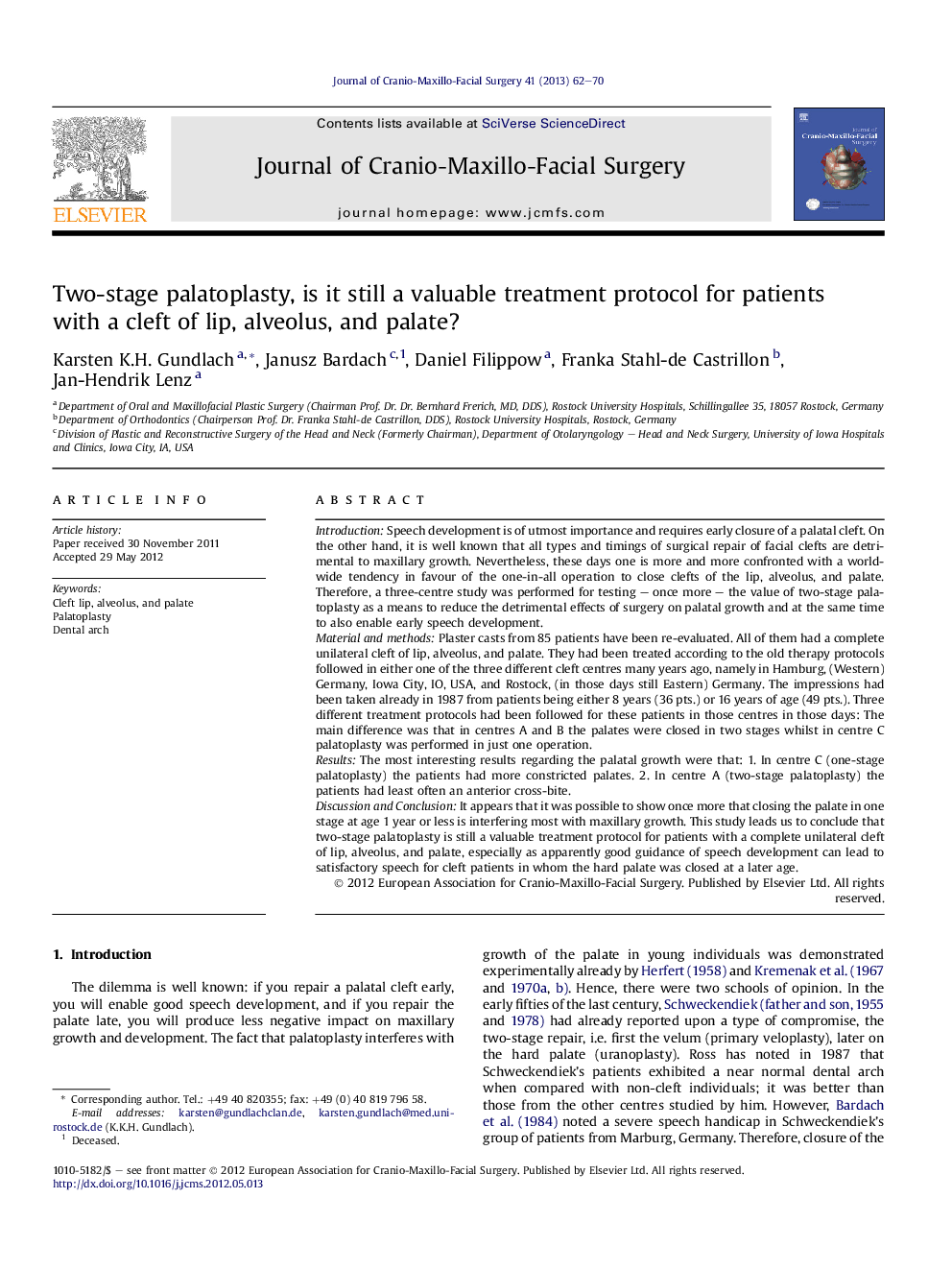| کد مقاله | کد نشریه | سال انتشار | مقاله انگلیسی | نسخه تمام متن |
|---|---|---|---|---|
| 3143231 | 1196810 | 2013 | 9 صفحه PDF | دانلود رایگان |

IntroductionSpeech development is of utmost importance and requires early closure of a palatal cleft. On the other hand, it is well known that all types and timings of surgical repair of facial clefts are detrimental to maxillary growth. Nevertheless, these days one is more and more confronted with a world-wide tendency in favour of the one-in-all operation to close clefts of the lip, alveolus, and palate. Therefore, a three-centre study was performed for testing – once more – the value of two-stage palatoplasty as a means to reduce the detrimental effects of surgery on palatal growth and at the same time to also enable early speech development.Material and methodsPlaster casts from 85 patients have been re-evaluated. All of them had a complete unilateral cleft of lip, alveolus, and palate. They had been treated according to the old therapy protocols followed in either one of the three different cleft centres many years ago, namely in Hamburg, (Western) Germany, Iowa City, IO, USA, and Rostock, (in those days still Eastern) Germany. The impressions had been taken already in 1987 from patients being either 8 years (36 pts.) or 16 years of age (49 pts.). Three different treatment protocols had been followed for these patients in those centres in those days: The main difference was that in centres A and B the palates were closed in two stages whilst in centre C palatoplasty was performed in just one operation.ResultsThe most interesting results regarding the palatal growth were that: 1. In centre C (one-stage palatoplasty) the patients had more constricted palates. 2. In centre A (two-stage palatoplasty) the patients had least often an anterior cross-bite.Discussion and ConclusionIt appears that it was possible to show once more that closing the palate in one stage at age 1 year or less is interfering most with maxillary growth. This study leads us to conclude that two-stage palatoplasty is still a valuable treatment protocol for patients with a complete unilateral cleft of lip, alveolus, and palate, especially as apparently good guidance of speech development can lead to satisfactory speech for cleft patients in whom the hard palate was closed at a later age.
Journal: Journal of Cranio-Maxillofacial Surgery - Volume 41, Issue 1, January 2013, Pages 62–70